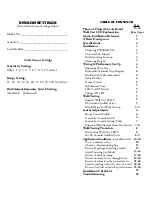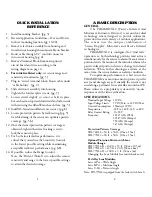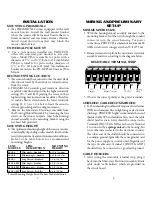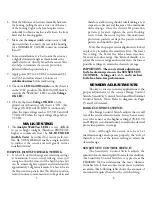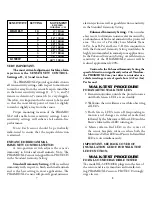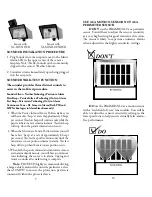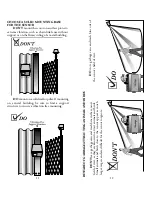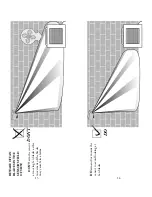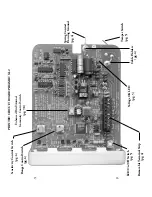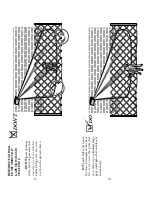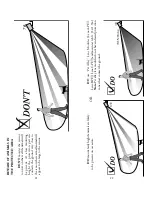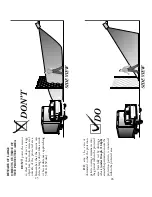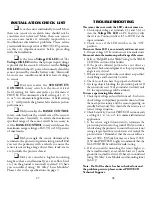
9
SOUNDER INSTALLATION PROCEDURE
1. Plug Sounder into the receptacle next to the Master
Alarm LED in the upper center of the sensor’s
faceplate. Note: The XL-Sounder can be conveniently
clipped to the sensor’s Weather Shroud.
2. Sounder activates immediately upon being plugged
into the receptacle.
SOUNDER WALK-TEST FUNCTION
The sounder provides three distinct sounds to
assist in the walk test procedure.
Sounder Silent = Neither Technology Portion in Alarm
Slow Beep = Passive Infrared Technology Only in Alarm
Fast Beep = Microwave Technology Only in Alarm
Continuous Tone = XL Sensor in Alarm (Both PIR and
MW Technologies in Alarm Simultaneously)
1. When the Passive Infrared Sensor Portion alarms you
will hear a slow “beep” at a rate of approximately 2 beeps
per second. The slow beep will continue only while the
passive infrared sensor remains in alarm. The slow beep
will stop when the passive infrared sensor resets.
2. When the Microwave Sensor Portion alarms you will
hear a fast “beep” at a rate of approximately 8 beeps
per second. The fast beep will continue only while the
microwave sensor portion remains in alarm. The fast
beep will stop when the microwave portion resets.
3. When both the passive infrared and microwave sensors
are in alarm simultaneously, you will hear a continuous
tone indicating the sensor is in alarm. Unplug and
remove sounder after walk testing is complete.
Note:
PROTECH highly recommends driving
a large vehicle around the outside perimeter at less
than 10 MPH to ensure the protection pattern is
contained within the protected area.
Sensor with
XL-SOUNDER
Sensor with
XL-MINISOUNDER
USE AS A MOTION SENSOR NOT AS A
PERIMETER SENSOR
DON’T
use the PIRAMID XL2 as a perimeter
sensor. You will have to adjust the sensor’s sensitivity
at a very high setting for good transverse detection.
The sensor is likely to experience nuisance alarms
when adjusted in the higher sensitivity settings.
DO
use the PIRAMID XL2 as a motion sensor
with a “wide field of view” lens module. You will be
able to adjust the sensor’s sensitivity setting in the
lower positions to help ensure virtually false-alarm-
free performance.
10


